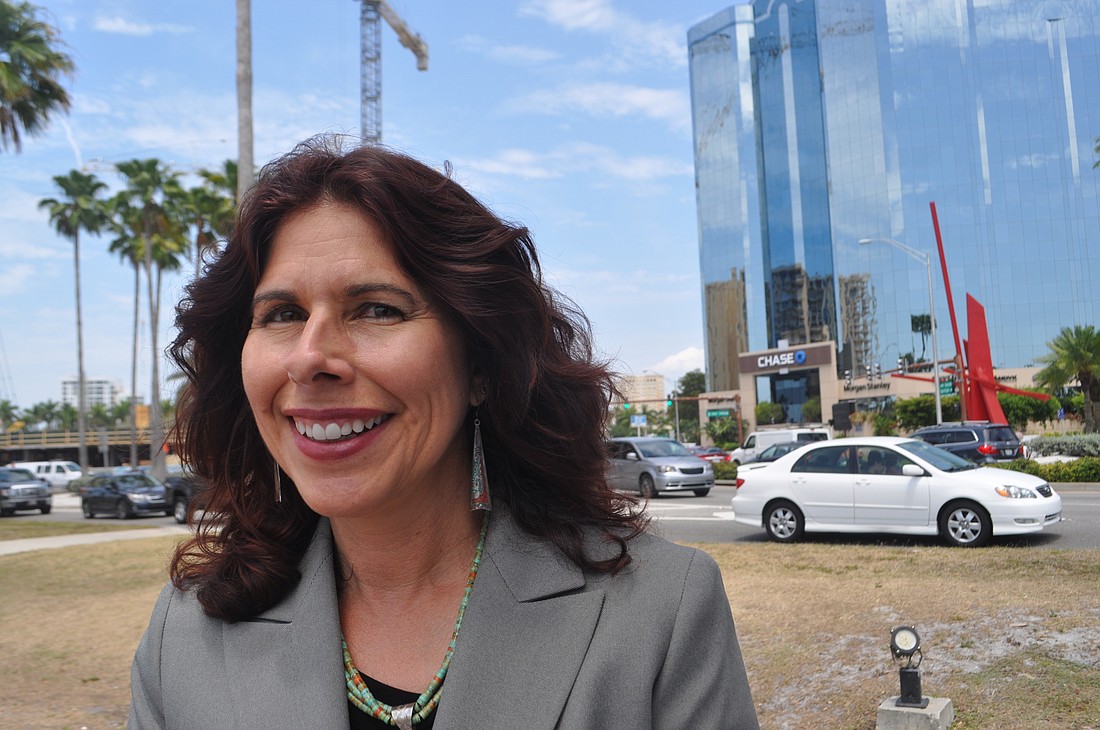- April 19, 2024
-
-
Loading

Loading

If the experience of getting stuck at red light after red light is all too familiar, relief might be on the way.
The City Commission voted unanimously March 6 to spend $408,967 in state grant money to re-time and coordinate 48 traffic signals throughout the city limits.
The project targets major corridors, streets such as Orange Avenue, Ringling Boulevard, Osprey Avenue and Dr. Martin Luther King Jr. Way.
The new traffic light timing isn’t limited to the city. Last year, the Florida Department of Transportation coordinated lights on state roads such as U.S. 41, U.S. 301 and Fruitville Road.
And in January, the county committed $1.4 million in FDOT grants to hire Tampa-based Albeck Gerken Inc. to study the timing of another 131 intersections outside the city limits. The city also hired Albeck Gerken, and the intention is to have the lights coordinated regionally.
City Engineer Alex DavisShaw said this is important because traffic management isn’t solely a city issue or a county issue.
“On streets like Tuttle, there’s a little in the city and some in the county, but everyone has to talk to each other,” she said. “It should just make it easier for them to coordinate with each other.”
Although some work has already begun, the signal re-timing won’t ease your commute anytime soon. DavisShaw said the contractor has to study various elements at each intersection, including overall traffic counts, turning traffic and through traffic.
The goal is to determine the precise demand for different movements at each of the intersections. Then, the signals can be timed to optimally serve that demand. Albeck Gerken will work through the fall developing a timing plan for the lights. By next season, the city will be able to implement the new timing patterns — and make changes it if issues arise.
“We want to make sure they work when it’s busy again,” DavisShaw said. “We’ll see if they’re working better, and if we find some things where they aren’t, we can adjust.”
The signals will be dynamically timed to account for different needs at different times of day.
“If you’re looking at a road where there’s a lot of traffic going into the city in the a.m. and leaving in the p.m., they’ll adjust those times to help with the flow of traffic where it’s needed — even if it’s different at different times,” DavisShaw said.
As the city and county grow, it’s likely the traffic demand will evolve. DavisShaw said the intention is to periodically check in on whether the traffic signal timing is still optimal. If not, more work might be needed.
DavisShaw could not provide an estimate on what level of impact the traffic signal re-timing might have on reducing travel times. That information will be included in the consultant’s report coming later this year.
Robert Fakhri, the county’s traffic engineering and operations manager, noted that there are limits to the benefits that can be derived from traffic signal timing.
“There is some room to improve, but there’s only so much green you can give on certain signals,” Fakhri said. “This work is mainly fine tuning the queue versus the green time.”
There are about 100 traffic signals in the city, but many of those are either on state roads or off corridors where traffic lights are sequenced. There are some areas not included in the initial project where the city might want to time the lights — DavisShaw singled out School Avenue as one — but city and county officials are optimistic the effort will represent a step forward for regional traffic management.
“This should really get us most of the way to where we need to be,” she said.